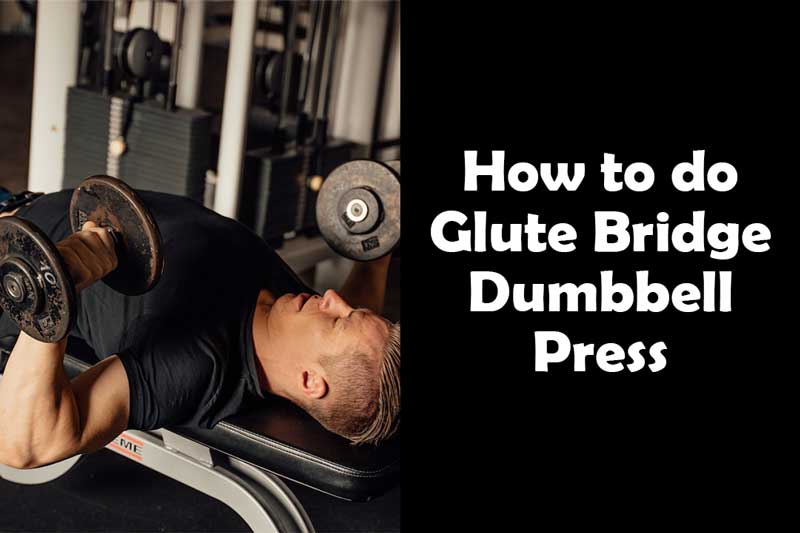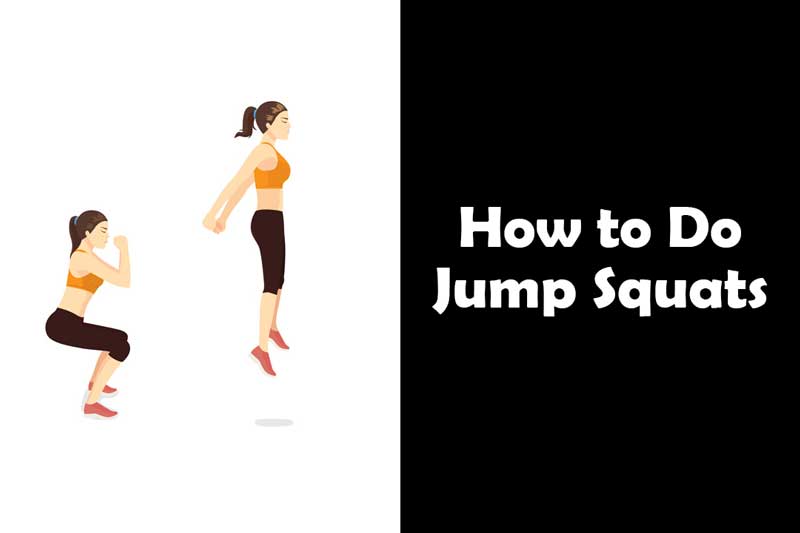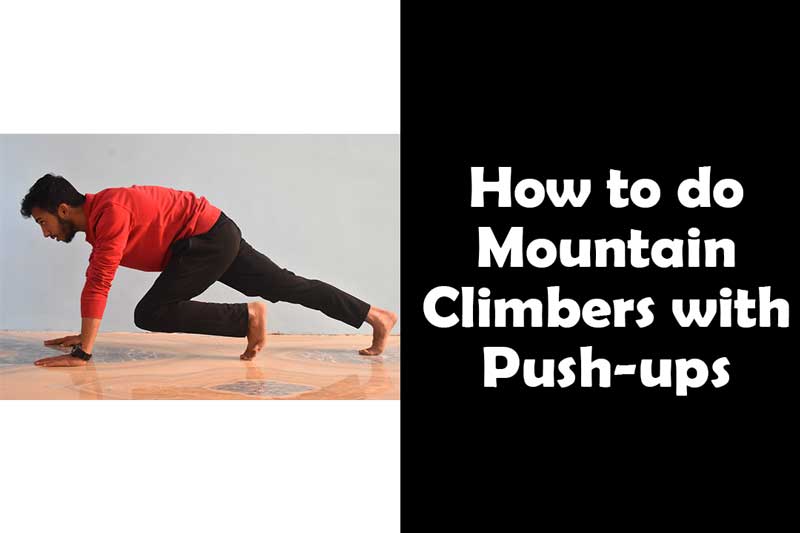Looking to strengthen your glutes, upper body, and core while improving your overall stability? Or want to exercise all these muscles with a single workout? The glute bridge dumbbell press is a dynamic compound exercise that offers a wide range of benefits.
In this article, we will explore the ins and outs of the glute bridge dumbbell press, including its proper form, variations, and the advantages it brings to your fitness routine.
Get ready to discover an effective exercise that targets multiple muscle groups, allowing you to build strength and stability like never before. Let’s dive into more of this exercise and unlock its incredible potential!
What is Glute Bridge Dumbbell Press?
The glute bridge dumbbell press is a highly effective compound exercise that targets multiple muscle groups, including the glutes, chest, shoulders, and triceps.
It combines the benefits of the glute bridge exercise with an upper body pressing movement, making it an excellent choice for individuals looking to build strength, stability, and overall muscular development.
Benefits of the Glute Bridge Dumbbell Press
1) Strengthening the Glutes
The glute bridge dumbbell press primarily targets the gluteal muscles, which include the gluteus maximus, gluteus medius, and gluteus minimus. These muscles play a crucial role in stabilizing the hips, enhancing athletic performance, and preventing injuries.
By incorporating this amazing exercise into your routine, you can effectively strengthen and tone your glutes, leading to improved lower body strength and power.
2) Developing Upper Body Strength
In addition to targeting the glutes, this full body exercise engages the chest, shoulders, and triceps. The pressing motion activates the pectoral muscles, deltoids, and triceps, promoting upper body strength development.
This exercise offers a unique combination of lower body activation and upper body pressing, allowing for a comprehensive full-body workout.
3) Enhancing Core Stability
The glute bridge dumbbell press requires core engagement throughout the movement. By maintaining a stable and neutral spine position, your core muscles, including the rectus abdominis and obliques, are actively involved in providing stability and balance. This exercise can significantly contribute to core strength and stability, which is essential for overall functional fitness and injury prevention.
4) Burns More Calories
As it is a compound exercise, it engages multiple muscle groups of the body. This activation of different muscle groups leads to more calories burned throughout the body. Making this exercise a great full body workout and calorie burning exercise as well as an amazing strength exercise.
Muscles Worked in the Glute Bridge Dumbbell Press
The glute bridge dumbbell press is a compound exercise that engages multiple muscle groups simultaneously, providing a comprehensive full-body workout. By understanding the specific muscles worked during this exercise, you can better appreciate its effectiveness and tailor your fitness routine accordingly.
1) Gluteus Maximus
This exercise primarily targets the gluteus maximus, the largest muscle in the buttocks. This muscle plays a vital role in hip extension, providing power and stability during movements such as running, jumping, and squatting.
2) Gluteus Medius and Gluteus Minimus
The gluteus medius and gluteus minimus, located on the sides of the hips, are also activated during this exercise. These muscles assist in hip abduction and help maintain balance and stability during the exercise. This can be an amazing leg workout as well for toning leg muscles.
3) Pectoralis Major
The pectoralis major, commonly known as the chest muscles, is engaged as you press the dumbbells upward. Also, this muscle group is responsible for horizontal adduction and flexion of the shoulder joint, contributing to upper body strength and development.
4) Deltoids
The deltoid muscles, located in the shoulders, are involved in raising and lowering the dumbbells during this exercise. They play a significant role in shoulder abduction, flexion, and extension, contributing to overall shoulder stability and strength.
5) Triceps Brachii
The triceps brachii, located at the back of the upper arm, are activated as you extend your arms fully during the exercise. These muscles are responsible for elbow extension, providing strength and definition to the arms.
6) Core Muscles
The core muscles, including the rectus abdominis, obliques, and transverse abdominis, are engaged throughout this exercise to stabilize the spine and maintain proper form. A strong core is essential for overall stability and functional movements.
Proper Form and Technique
To perform the glute bridge dumbbell press correctly and maximize its benefits, it’s crucial to maintain proper form and technique. Here’s a step-by-step guide:
1) Setting up for the Exercise
- Lie on your back with your knees bent and feet flat on the ground.
- Hold a dumbbell in each hand, positioning them just above your shoulders, palms facing forward.
- Keep your arms angle slightly inside your body and not straight 90 degrees from your sides. Also, don’t keep your arms too inside your body.
2) Executing the Movement
- Engage your glutes and core muscles, and press your hips up off the ground, creating a straight line from your shoulders to your knees.
- While maintaining the glute bridge position, extend your arms fully and press the dumbbells upward until your arms are straight.
- Slowly lower the dumbbells back to the starting position while keeping your hips elevated.
- Repeat for the desired number of repetitions.
Common Mistakes to Avoid
- Avoid arching your lower back excessively during the movement.
- Ensure that your glutes are fully engaged throughout the exercise.
- Do not let the dumbbells drift too far forward or backward; keep them aligned with your shoulders.
You might also like:
How to do Dumbbell Deadlift to Upright Rows
Variations and Progressions for glute bridge dumbbell press
To add variety and challenge to your workout routine, you can try different variations and progressions of this exercise:
- Single-leg Glute Bridge Dumbbell Press: Lift one leg off the ground while performing the exercise to increase the demand on the glutes and core muscles.
- Resistance Band Glute Bridge Dumbbell Press: Place a resistance band just above your knees to add extra resistance and then activate the hip abductors.
- Elevated Glute Bridge Dumbbell Press: Perform the exercise with your upper back supported on an elevated surface, such as a bench, to increase the range of motion and challenge your stability further.
- Single Arm Glute Bridge Dumbbell Press: Instead of doing the press movement with both the arms, do it with only one arm. Alternate between them. It is good for beginners or anyone trying to do it with heavy weight.
Incorporating the Glute Bridge Dumbbell Press into Your Workout Routine
This full body exercise can be easily incorporated into your existing workout routine as a compound exercise that targets multiple muscle groups. So, it is often performed in a strength training or full-body workout. Here’s an example of how you can include it:
- Warm up for 5-10 minutes with light cardio exercises or dynamic stretches.
- Perform 2-3 sets of 10-12 repetitions of the glute bridge dumbbell press.
- Rest for 60-90 seconds between sets.
- Combine it with other lower body exercises, upper body exercises, or core exercises to create a well-rounded workout.
Precautions and Safety Guidelines
Before incorporating this exercise or any new exercise into your routine, consider the following precautions:
- If you have any pre-existing medical conditions or injuries, consult with a healthcare professional or a qualified fitness trainer before attempting this exercise.
- Start with lighter dumbbells and gradually increase the weight as your strength and technique improve.
- Always maintain proper form and avoid excessive strain on your lower back.
- Listen to your body and stop immediately if you experience any pain or discomfort.
Conclusion
The glute bridge dumbbell press is a powerful exercise that targets the glutes, upper body muscles, and core. By incorporating this compound movement into your routine, you can build strength, stability, and overall muscular development. Also, remember to prioritize proper form, gradually increase the weight, and listen to your body to ensure a safe and effective workout. Start incorporating this amazing compound exercise today to take your fitness journey to new heights.
Frequently Asked Questions
1) Can anyone perform the glute bridge dumbbell press?
Yes, this exercise is suitable for individuals of various fitness levels. However, it’s important to start with proper form and lighter weights, gradually progressing as your strength improves.
2) How heavy should the dumbbells be?
The weight of the dumbbells should be challenging enough to complete the desired number of repetitions with proper form. Start with a weight that allows you to maintain good technique and increase gradually as you become more comfortable and stronger. But remember to take weights that you can do 8-12 repititions of.
3) Is it necessary to use a bench for glute bridge dumbbell press exercise?
No, it’s not necessary to use a bench. The exercise can be performed on the ground or on a stable surface. Using a bench is not advisable for this workout, because it can make it very uncomfortable.
4) Can the glute bridge dumbbell press help with posture?
Yes, the exercise can contribute to improved posture. By strengthening the glutes and core muscles, it can help stabilize the spine and promote better alignment.
5) How often should I incorporate glute bridge dumbbell press exercise into my routine?
The frequency of incorporating this exercise into your routine depends on your overall workout program. Aim for 2-3 sessions per week, allowing adequate rest and recovery between workouts.
And as always ‘Say Yes to Strength’





